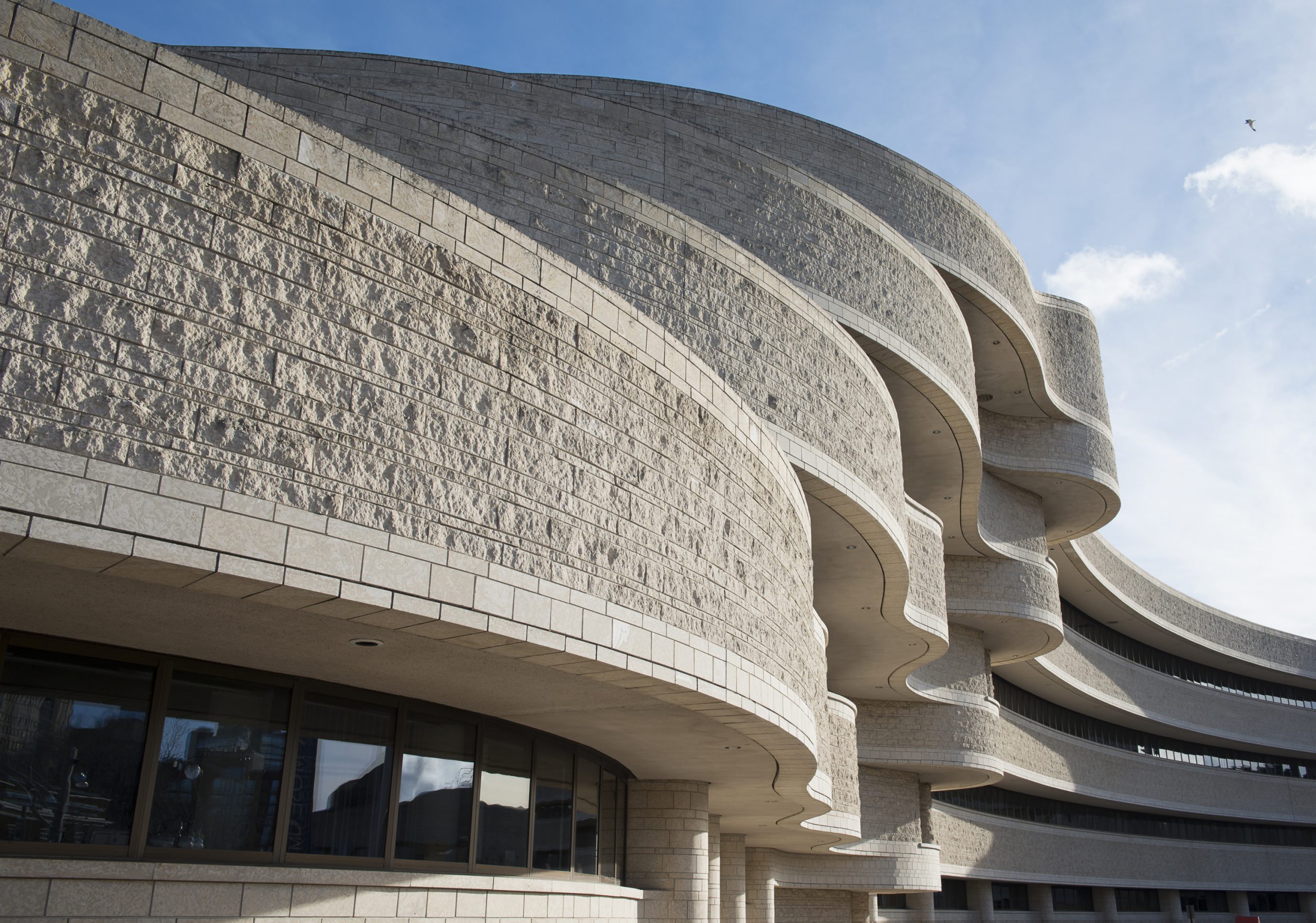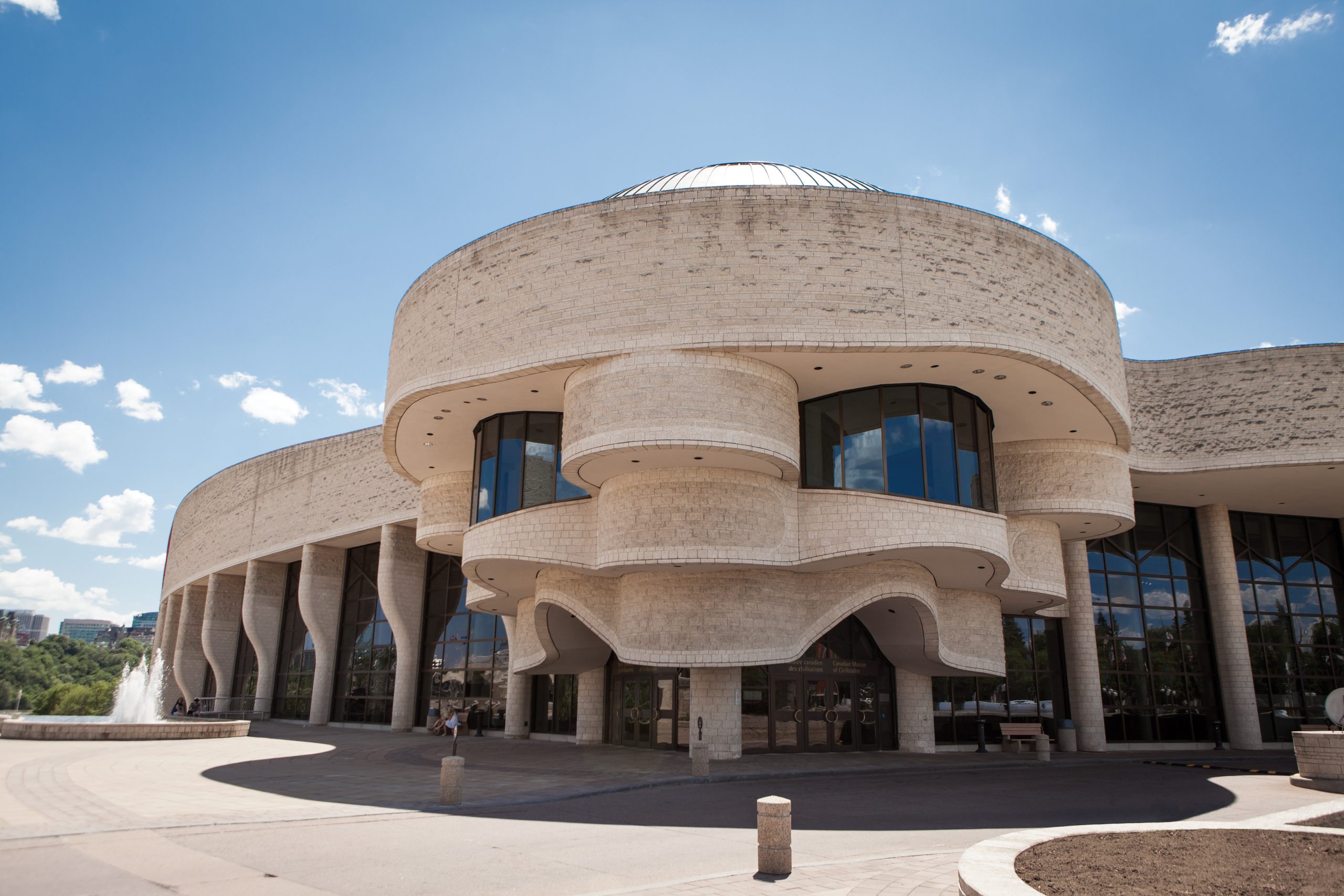The Canadian Museum of History is one of Canada’s oldest public institutions, with roots stretching back to 1856. Today, this internationally recognized institution welcomes thousands of visitors every year to its riverfront complex, where it houses a collection of more than four million objects.
The Museum’s origins can be traced to the Geological Survey of Canada (GSC), established in 1842 to explore the geology, mineralogy and natural history of the former Province of Canada. In 1856, Sir William Edmond Logan, the first director of the GSC, opened a public museum in Montréal with the support of an act passed by the Province of Canada.
Over the years, the small museum expanded to include human history. In 1877, the GSC’s official mandate was further enhanced to include the study of modern flora and fauna, as well as ancient human history, traditions, languages, and living conditions in remote parts of the country. In 1881, the GSC and its museum moved from Montréal to Ottawa.
Throughout the 20th century, the GSC and its museum underwent significant transformation. In 1907, the GSC became a branch of the newly created federal Department of Mines. Following an early petition by the Royal Society of Canada (RSC) urging the federal government to develop a national museum, construction began in 1906 on what was to become Ottawa’s Victoria Memorial Museum Building. In 1910, an anthropology division — including archaeology and ethnology sections — was established. The new division was headed by Edward Sapir, the museum’s first full-time anthropological specialist. That same year, the Victoria Memorial Museum Building became the new home of the GSC and its museum. In 1927, the Museum Branch of the Department of Mines was renamed the National Museum of Canada.


During the 1950s, the National Museum of Canada was divided into two branches: Natural History and Human History, the latter of which incorporated archaeology and ethnology. In 1958, the Canadian War Museum also became a division of the National Museum of Canada. In subsequent years, the Human History Branch added history and folklore divisions.
In 1968, the National Museum of Canada was transferred to the National Museums of Canada Corporation, under the federal Department of the Secretary of State, and the Human History Branch became the National Museum of Man, with William E. Taylor as its first director. In 1982, plans were unveiled for the construction of a new building for the National Museum of Man. In 1986, it was renamed the Canadian Museum of Civilization, and opened to the public in 1989. The Canadian Museum of Civilization Corporation was also officially established in 1990 under the Museums Act.
During the 21st century, the Canadian Museum of Civilization continued to evolve and expand its collection, actively fostering a greater understanding of the people, histories, and cultures in what is now Canada. In 2013, it was rebranded the Canadian Museum of History with a renewed mandate. Today, it offers an immersive journey across 20,000 years of human history through engaging exhibits and activities, both on site and online.
The Canadian Museum of History as a Crown corporation currently oversees three museums — the Canadian Museum of History, the Canadian War Museum, and the Virtual Museum of New France — as well as the federal investment program, Digital Museums Canada. In 2020, the corporation released a new Framework for Indigenous Relations (PDF), redefining its commitment to Indigenous Peoples across Canada, while also creating an action plan to transform its practices, policies, and processes to better serve Indigenous communities and the broader Canadian public.
In recent years, the corporation has taken concrete steps to improve accessibility. In 2023, it released an Accessibility Plan aimed at enabling as many people as possible to enjoy the Museums. Through a process of ongoing cultural transformation, the corporation also remains committed to providing a welcoming, supportive, safe, and inclusive workplace for all employees.
With a rich history spanning nearly 170 years, the Canadian Museum of History has grown from relatively humble beginnings to its current position as a leading cultural institution, dedicated to preserving and presenting the diverse stories and experiences of this land’s many peoples.
Learn more about our Mandate, Vision and Values.
Learn more about our Strategic Directions for 2023–2029.
